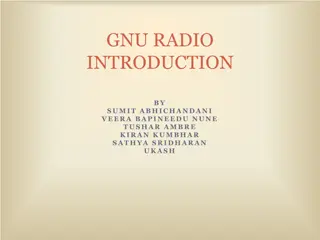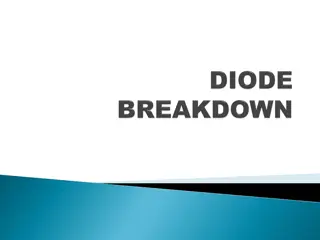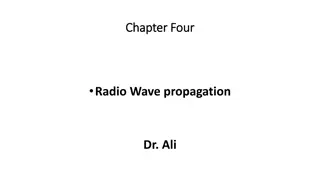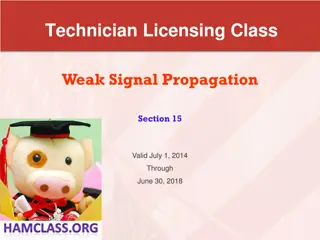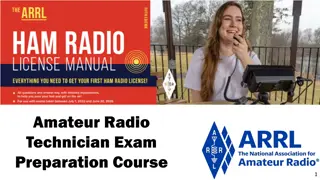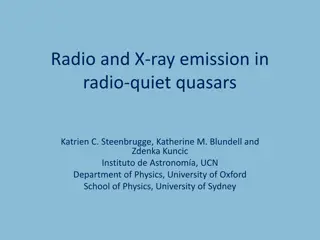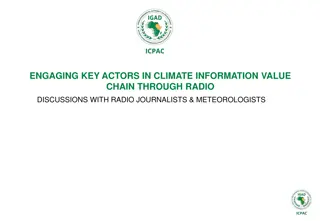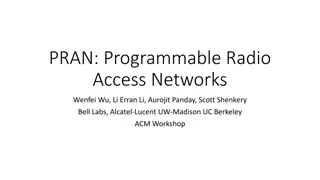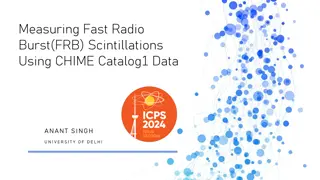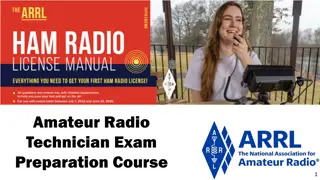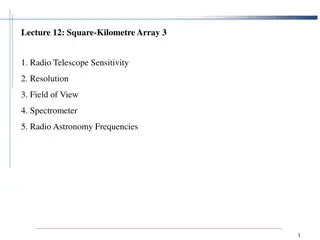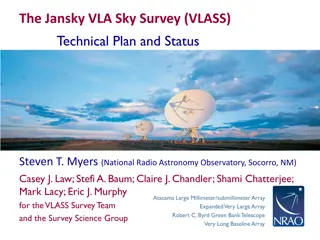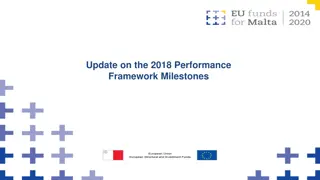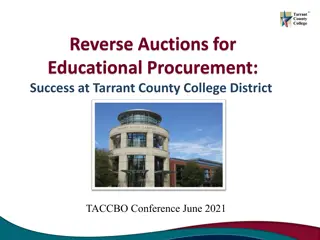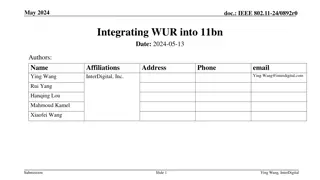The Reverse Beacon Network: Exploring Radio Spots and Milestones
Discover the fascinating world of the Reverse Beacon Network (RBN) and its evolution since late 2008. Learn about its origins, key figures, milestones, and how volunteers use Skimmers to monitor radio signals in real-time. Dive into the network's capabilities, technologies, and the community behind it.
Download Presentation

Please find below an Image/Link to download the presentation.
The content on the website is provided AS IS for your information and personal use only. It may not be sold, licensed, or shared on other websites without obtaining consent from the author.If you encounter any issues during the download, it is possible that the publisher has removed the file from their server.
You are allowed to download the files provided on this website for personal or commercial use, subject to the condition that they are used lawfully. All files are the property of their respective owners.
The content on the website is provided AS IS for your information and personal use only. It may not be sold, licensed, or shared on other websites without obtaining consent from the author.
E N D
Presentation Transcript
THE REVERSE BEACON NETWORK SPOTS AND MORE Pete Smith, N4ZR and the RBN Team For the Hamden County Radio Association, January 17, 2023
How It Began Late 2008 - N4ZR helping VE3NEA with testing CW Skimmer alpha and beta PY1NB (now CT7ANO) e-mail conversation with N4ZR Felipe suggested the idea of using his Dxwatch web page software to display Skimmer spots. Felipe wrote the first Aggregator and the rest is history
Who We Are Felipe PY1NB/CT7ANO Co-founder, website and server management W3OA Aggregators, server optimization Dave KM3T Relay Servers, general server-side expertise Mark, K7JMG Revision of web page, map Nick, FM5VIH/SV3SJ Spots Analysis Tool, server optimization Pete, N4ZR Co-founder, user support, publicity, RBN blog
The RBN in 2022 Users Web Page CW, RTTY, PSK ,FT8 Retail Clusters Windows Aggregator Software At each node 200+ Skimmers Worldwide DB/Web server Telnet Server 3 Relay Servers
Milestones 2008 CW Skimmer released and RBN begun as a web- based system.. 2008-9 -- SDR-IQ and QS1R receivers introduced, providing multi-band coverage 2009 -- First RBN spots via retail DX clusters, W3OA s first Aggregator (now version 6.3) 2010 F5VIH/SV3SJ developed Spots Analysis Tool 2011-13 Huge increase in spot volume and number of Skimmers 2019 Added FT4/8 coverage 2021 11 million spots in CQWWCW >60/second. 2022 Who knows? 13 million? SSB (JK)
Whats a Skimmer? A volunteer operator no experience required A Software Defined Receiver US$20-600 Receives bands, not individual frequencies A multi-band antenna or antennas CW and/or RTTY Skimmer Server software running on a Windows PC. Licenses are $75 and $50 from VE3NEA, 30-day free trial Aggregator software provided by the RBN free A moderate-speed Internet connection
What You Can See There Spots as They Happen
Pros and Cons of RBN Spots 100x as many spots as traditional spotting network Everything spotted, not just those judged as rare Duplicate spots (though not on CC Cluster) Too many busted spots, despite 99% accuracy per Skimmer, because there are so many Skimmers
Using RBN Spots Use filters that you set at retail DX cluster node or in client to feed logging software Save favorite combinations AR Cluster has extensive filtering options for RBN spots CT1BOH quality filters really work! CC Cluster does most filtering, dupe removal for you Develop techniques for jumping spots quickly Experiment!
Examples of Filtering AR Cluster: set/dx/filter call=N4ZR or (not skimmer and spottercont=NA) or ((skimmer and unique>2) and (spotterstate=[WV,MD,VA,PA,NC])) CCCluster: Use Client to set criteria and send to cluster
Antenna Tests Send TEST or CQ twice, your call 2-3 times, and look for spots QSY, change antennas, and TEST again
FT4/8 Coverage Begun in 2019, after long debate Biggest problem sheer volume The solution make FT4/8 spots available via Telnet, but don t archive or display on the website Encourage retail clusters to carry FT4/8 spots
Status in 2023 Many clusters carrying RBN FT4/8 spots: Partial list (no special order) dxc.mx0nca.uk:7373 k9lc.ddns.net:7300 dx.w8bs.net:7300 ve3cgr.dyndns.org:7300 dxc.n4zkf.com:7373 k2can.us:7373 n6ws.ddns.net:7300 dxc.w9pa.net:7374 dxc.k0xm.net:7300 dxcluster.cronux.net:7300 (EA3CV) cluster.zs2ez.org :7373 Huge volume 95 percent of total spots now FT4/8
Resources RBN website http://reversebeacon.net On the website: 7 bands of CW and At Least 13 bands of FT4/8 on a Single Red Pitaya RBN blog http://reversebeacon.blogspot.com Tutorial - http://reversebeacon.blogspot.com/2013/12/a-new-tutorial-on- using-rbn.html Download of Aggregator on the RBN web site ARCluster filters http://www.k3lr.com/w9zrx/Using%20AR- Cluster%20V6.pdf CCUser - http://www.bcdxc.org/ve7cc/default.htm#prog Mailing lists: skimmertalk@contesting.com RBN-OPS@groups.io hamsci@groups.io That s all folks!

